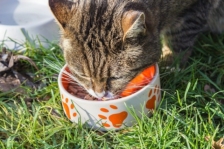 So, a woman walks into a grocery store to pick up food for a dinner party. She’s running late, and has to get home to start cooking. She’s stressed. Fortunately, she finds everything on her shopping list in short order. Well, almost everything.
So, a woman walks into a grocery store to pick up food for a dinner party. She’s running late, and has to get home to start cooking. She’s stressed. Fortunately, she finds everything on her shopping list in short order. Well, almost everything.
She wants to make fruit salad for dessert. But, will she have time to make it? Then she remembers that some stores sell prepared fruit. So, she approaches a store employee in the produce section.
“Do you have any cut fruit?” she asks.
The employee scratches his head, squints and stares.
“Well, sure, ma’am,” he says. “Follow me.”
He leads her across the store, out of the produce section, and over to the pet food aisle.
“Here you are, ma’am,” he says, handing her a can. “Cat food.”
________________________
Explanation — How did the woman in this joke end up with a can of cat food? Well, you see, it was all a matter of stress. Let’s take a look at those two compound nouns: “cut fruit” and “cat food.” How are they different?
1. Different vowels: CAT– æ vowel (black) and CUT– л vowel (mustard)
2. Different stress: CUT FRUIT has two fairly equal stresses whereas CAT FOOD is stressed like a compound noun, more heavily on the first and lightly on the second.
3. Vowel length: FRUIT has a short vowel whereas FOOD has a long vowel
